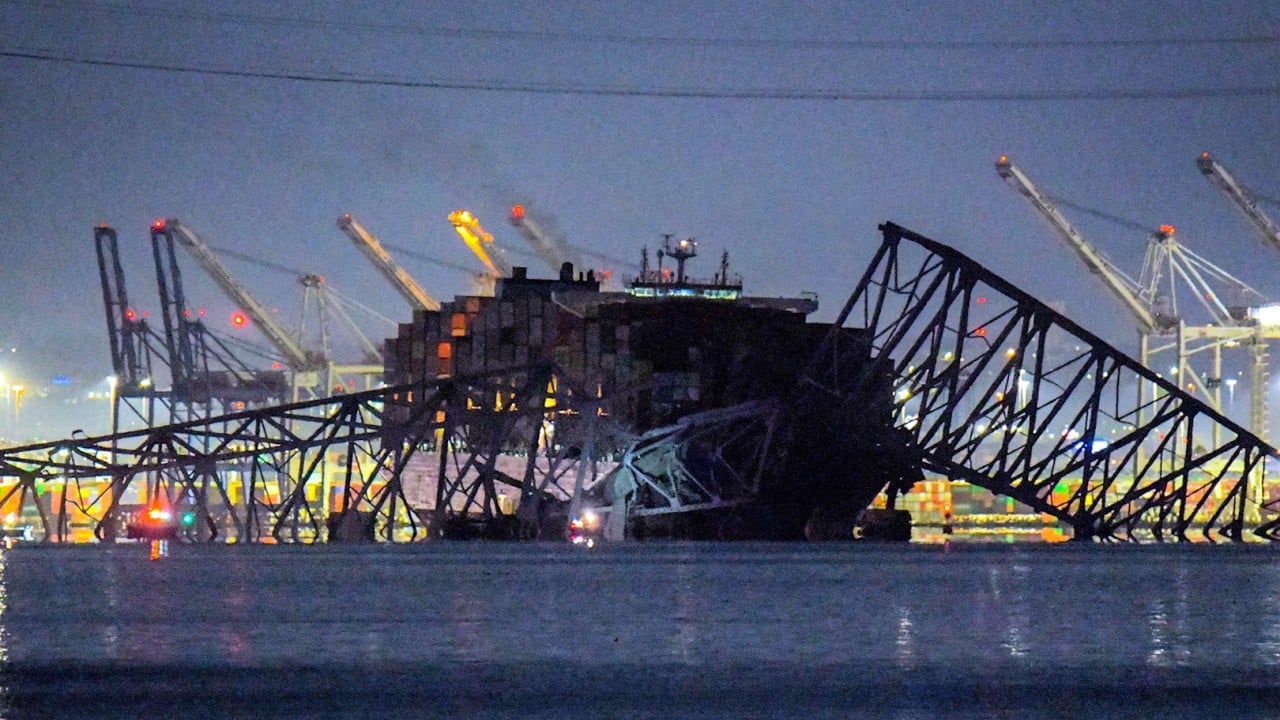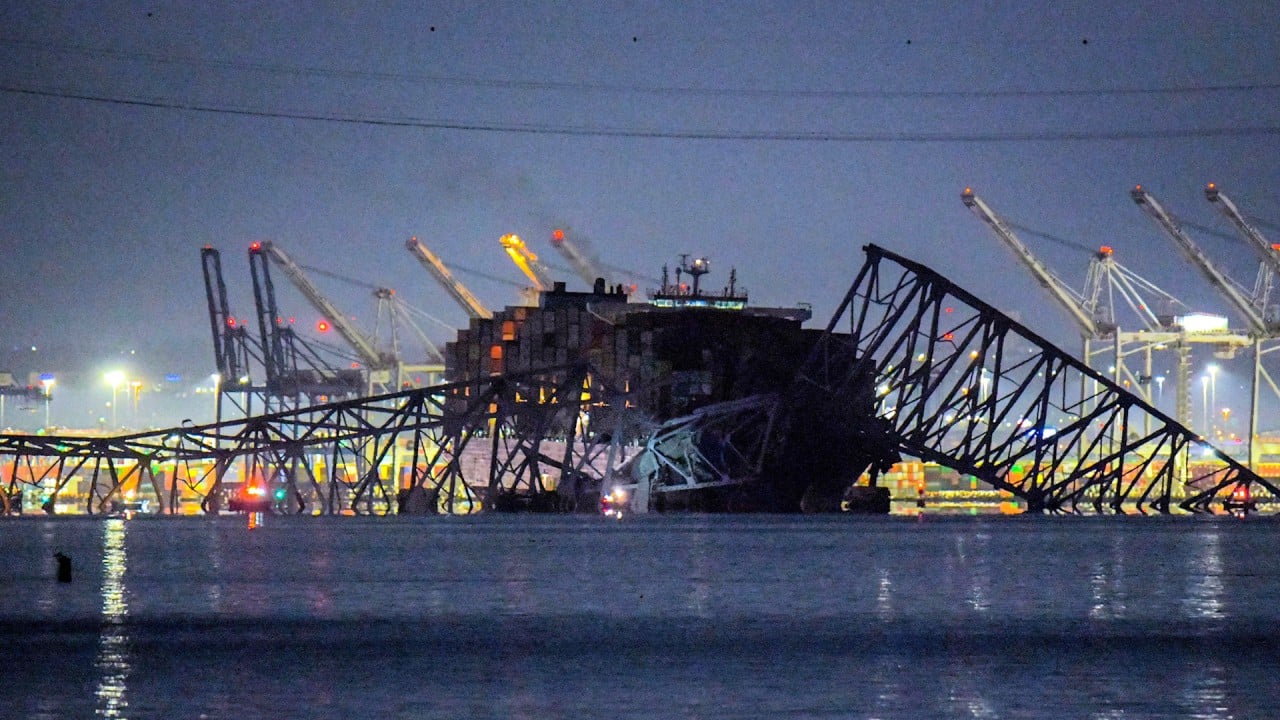Baltimore bridge collapse may lead to ‘largest single marine insurance loss ever’, Lloyd’s of London says
Insurance payouts for the Tuesday’s collapse of the Francis Scott Key Bridge in Baltimore could be among the largest ever in marine insurance, according to Lloyd’s of London Chief Executive Officer John Neal.
“This has the potential to be one of the largest marine losses in history,” Neal said in an interview with Bloomberg News on Thursday.
“It’s a multibillion-dollar loss. I think it has to be, but I think it is a little too early to say what you actually think it’s going to cost.”
The bridge collapsed on Tuesday after being struck by a container ship, the Singapore-flagged Dali, sending vehicles into the water and threatening chaos at one of the most important ports on the US East Coast. Barclays Plc analysts estimated that insurers face claims of as much as US$3 billion in a note on Wednesday.
Insurance claims for damage to the bridge alone could reach US$1.2 billion, Barclays said in its note, predicting further potential liabilities of US$350 million to US$700 million for wrongful deaths and yet-to-be-determined amounts for business interruptions while access to the city’s port is blocked.
“Determining who pays those claims will rest on whether the accident was caused by negligence or mechanical failure,” Bloomberg Intelligence analysts Charles Graham and Kevin Ryan wrote in a note on the day of the collapse.
“Given the multiple parties involved, settlement of any claims is likely to be complex.”
“There’s quite a complex weave of insurers that are involved with this,” Neal said in the interview on Thursday.
Lloyd’s reported underwriting profit of £5.9 billion (US$7.4 billion) for 2023 on Thursday, a £3.3 billion increase on the previous year due to lower costs from large risks and natural catastrophe claims.



